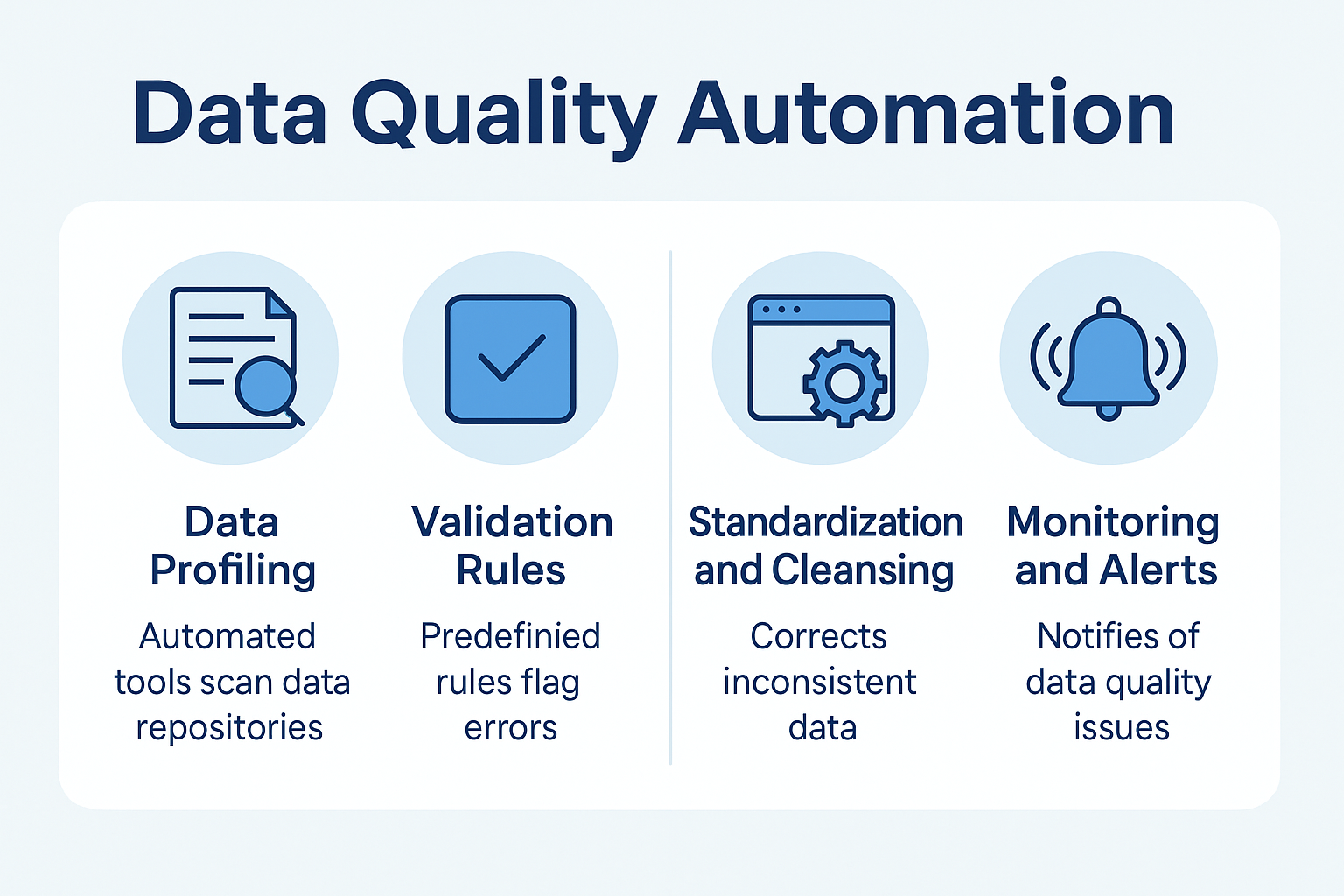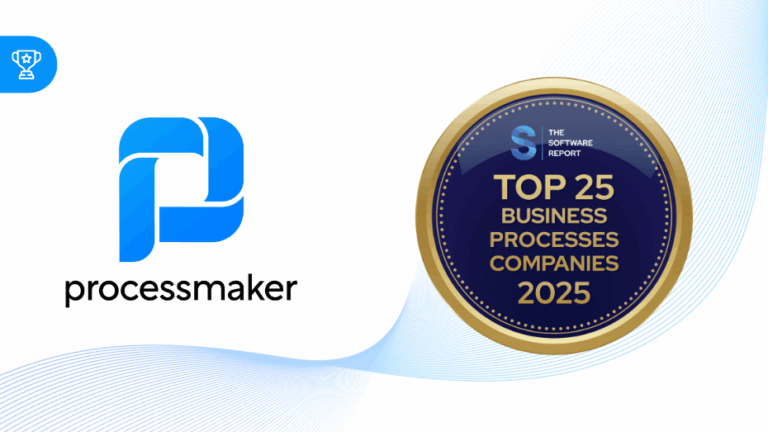Intelligent Document Processing (IDP) and Robotic Process Automation (RPA) are two technologies that have gained significant popularity in recent years. Both technologies automate repetitive and manual tasks, but each has wildly different skills and objectives.
At their core, both IDP and RPA teach computers how to perform data-related tasks on our behalf. They can help your organization achieve similar goals:
- Boost accuracy
- Reduce reliance on cost and resource-guzzling manual data entry methods
- Button-up efficiency gaps
- Improve response times
- Enhance regulatory compliance
- Mine valuable insights from existing data
- Standardize processes
While they share overarching strategic similarities, RPA and IDP’s main differences lie in differing approaches to task automation.
What is robotic process automation?
Robotic process automation (RPA) is the teacher’s pet of your tech stack. Give these bots the rules for an assignment and they’ll follow orders to perfection.
RPA prefers structured data, or documents where information religiously appears in a fixed location. It can swiftly comb through spreadsheets, bank statements, and receipts.
It’s not just an ace at data extraction—RPA can perform other action sequences, too. A financial institution can teach a squadron of RPA bots how to log into an Anti-Money Laundering database and look up the names of loan applicants. If there’s a process backed by a very prescribed recipe, RPA can follow it.
Examples of RPA Use Cases
RPA is obsessed with rules. It can mimic nearly any task performed through a recipe of clicks and keystrokes. Organizations are using RPA to:
- Copy and paste information between two spreadsheets or applications
- Move files between systems
- Manage databases
- Screen scrape
- Populate forms
- Prepare standard reports
From sales to operations, HR to accounting, robotic process automation greatly reduces manual “swivel chair” admin work.
Limitations of RPA
- RPA is immediately thrown off by exceptions: atypical layouts are not their specialty.
- RPA bots love their comfort zone: RPA software is best skilled at structured documents. Unstructured documents, where information can appear in various locations (like emails, presentations, or books), are outside RPA’s wheelhouse.
- RPA works best with crystal-clear, typed text: Handwriting and funky fonts are not RPA’s cup of tea.
Organizations are overcoming these limitations by leveraging artificial intelligence and machine learning. As these new technologies take the stage, advanced, more sophisticated “RPA-esque” tools are evolving into intelligent document processing.
What is intelligent document processing?
Intelligent document processing (IDP) is a technology that automates the process of extracting information from structured and unstructured documents.
This is where RPA and IDP start to branch off into their own expertise: IDP embraces unstructured documents that do not adhere to standardized formats. It’s much harder to make rules around unstructured documents. A data point doesn’t sit in a defined spot, but could be scattered in different places on every document. That’s why, compared to RPA, IDP has a mind of its own. It doesn’t just follow directions, but it can also “think outside the box” to understand more complicated document types.
Structured vs. Unstructured Documents: What’s the difference?
| Structured documents | Unstructured documents |
| Spreadsheets | PDFs |
| Bank statements | Emails |
| Address or mailing labels | Text or Slack messages |
| Receipts | Word files |
| CRM datasets | Handwritten notes |
| Invoices | Images |
| Lists of contact information | Social media posts |
| Inventory database | Patient records |
| Serial numbers | Research studies |
IDP doesn’t just pull data from a document, but learns from it.
IDP uses machine learning to cozy up to patterns and learn more about the structure of your documents. The extracted information is then processed and organized, making it easier to manage and analyze. IDP is particularly handy in organizations that deal with a large volume of documents.
Examples of IDP Use Cases
IDP can comb through long, complex documents to find the data in question. Information, like a client name, doesn’t need to be tied to a strict “client name” field. The tech behind IDP understands the overall context of a document to pluck a “needle in a haystack” data point from a cluster of information. This makes it an ace in use cases like:
- Convert words, numbers, and characters from a scan or image into editable text
- Identify and extract information from unstructured, loosely formatted documents (like a birthdate buried in the text of an email)
- Prepare cleaner data by fixing splotchy or missing characters and reformatting inconsistencies
- Go beyond traditional search queries to help you find the right document using more nuanced language
IDP ups the ante on RPA’s limitations, making more sophisticated document management and processing possible.
Limitations of IDP
The limitations of IDP are narrowing at a breakneck pace. Advances in the AI technologies that underpin its magic are the industry darlings of budding tech startups and innovators. In the near future, machines will only get better at interpreting information, boosting IDP’s document IQ along with it.
IDP vs. RPA: Key differences
One of the key differences between IDP and RPA is their level of intelligence. If RPA is the brawn, IDP is the brawn and the brains. The added layer of intelligence makes IDP a savvy, continuous student.
- IDP has the ability to understand the content of documents and extract relevant information, making it a more intelligent technology.
- RPA is limited to performing the tasks it has been programmed to do. It does not have the ability to understand the context of the information it is processing.
Consider this example. We’ll feed a document with a birthdate, first and last name, birthplace, a doctor’s name, and the name of two parents. Here’s how each technology would treat the file:
- RPA extracts a birthdate from a document. It has no idea what the document is—it only has eyes for the information you instructed it to hunt for.
- IDP extracts the birthday. But it also understands the document’s context to know that, yes—this document is a birth certificate.
Unlike IDP, RPA does not whirr with heightened brainpower. RPA plays in content, while IDP extends these capabilities with a knowledge of context.
In terms of cost, the initial investment of IDP can be steeper than RPA. Why? Because AI is ever-evolving, and it requires a higher level of development and maintenance. RPA, on the other hand, is like a calculator—it’s relatively stagnant in terms of innovation. It’s cheap to implement and maintain, making it an attractive option for organizations looking to automate their processes on a budget.
A closer look at the tech behind intelligent document processing
If your organization still hasn’t jumped feet-first into intelligent document processing, it may sound like a foreign experience. But you unknowingly interact with IDP every day!
- Ran a red light or bypassed a high-speed toll lane? Buckle up; the ticket’s on the way. Authorities use IDP to extract license plate numbers from traffic cameras and identify distracted drivers.
- Receive a work-from-home allowance? Your employer might ask you to snap a photo of receipts for office equipment. IDP can strip out the data to automatically populate an expense report.
- Fall in love with a gripping passage from a new book? Take a picture of it with your smartphone. Some cameras now use IDP to transform printed words into text you can edit and send to pals.
Two technologies make this software sorcery possible: natural language processing (NLP) and optical character recognition (OCR).
How natural language processing works
For many people, their first memorable interaction with NLP was named Amazon Alexa. We loved pestering the little gizmo for weather reports, dad jokes, and bedtime stories. Natural language processing made the conversation possible.
It trains machines on the quirks, tics, and emotional tells of human language so they can not just understand us, but talk back.
Computers understand grammar—how to identify verbs, adjectives, and nouns.
They can unravel a sentence’s context to know which of the 430 definitions of the English word “set” we’re using.
NLP can also decipher our attitudes to know if our tweet about the latest episode of The Mandalorian was positive or negative.
How optical character recognition works
Together, optical character recognition (OCR) and its shrewder companion, intelligent character recognition (ICR) are a one-two punch. These two technologies work hand in hand to automate document processing.
OCR powers the above example about turning a book excerpt into a text message. It’s a powerhouse at stripping typed text from pictures or scans, like receipts and gift card codes.
When you’re beyond the fringe of mainstream fonts like Times or Calibri, ICR is your go-to. Flowy penmanship, artsy Canva fonts, signatures—even chicken-scratch-tier handwriting—are all in ICR’s wheelhouse. It’s a great way to extract text from healthcare records, handwritten notes, or social media graphics.
IDP or RPA: Which is right for you?
Use RPA if…
- You need to extract information from simple, consistently formatted documents.
- Incoming documents rarely change formats, and your industry isn’t subject to changing regulations: RPA embraces precision. Any rule changes require significant retraining.
- “Swivel chair” data entry is wrecking efficiency: If staffers perform highly repeatable, “copy-and-paste-style” tasks day in and day out, you can benefit from an RPA recipe.
Use IDP if…
- Unstructured data is a challenge for your organization to manage and process: You’re not alone! The majority (80–90%!) of an organization’s data is unstructured, and IDP is the best way to tap its insights.
- Your industry is ripe with regulatory changes that frequently alter document layouts: IDP is a keen, self-directed learner. You don’t need to reinvent the wheel for every layout change.
- Your organization relies on an increasing flow of complex, sophisticated data: Analysts estimate that unstructured data doubles every 90 days. Fortunately, IDP is a true self-starter: it leverages every action to expand its knowledge. This means it can rapidly scale to keep up with the big data boom!
These technologies can become waypoints in your workflows. For example, you can set them up to trigger automatically whenever a customer submits an application or uploads a document. Additionally, the extracted data becomes a dynamic, live data point in a workflow. Pass it between a CRM, ERP, or favorite point solution.
Remember, both RPA and IDP are a must-have in any well-oiled business process. The real benefits lie in using both simultaneously.





